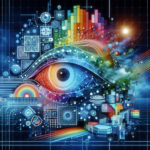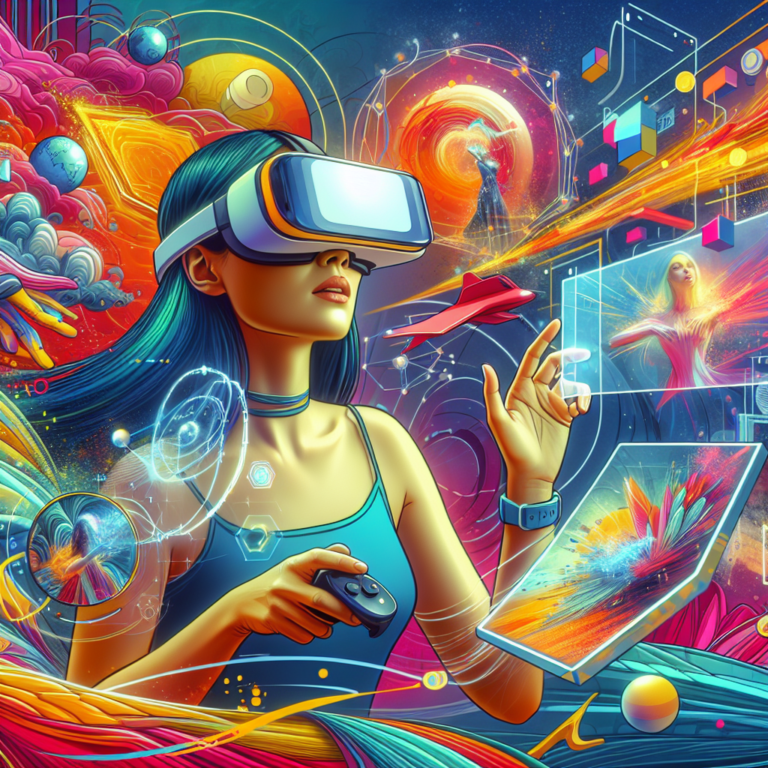Unleashing the Power of Immersive Technologies in Brand Storytelling 🚀
The New Age of Storytelling
In today’s fast-paced digital landscape, brands are constantly seeking innovative ways to capture the attention of their audiences. Traditional storytelling methods are evolving, and one of the most exciting developments is the rise of immersive technologies. Augmented Reality (AR), Virtual Reality (VR), and Mixed Reality (MR) are no longer futuristic concepts; they are transforming how brands convey their stories, enhance user engagement, and create lasting memories for consumers.
What Are Immersive Technologies?
Before diving into how these technologies are revolutionizing brand storytelling, let’s define what we mean by immersive technologies:
- Augmented Reality (AR): Enhances the real world with digital overlays, allowing users to interact with virtual components superimposed in their physical environments.
- Virtual Reality (VR): Provides a completely immersive experience, transporting users into a virtual world where they can engage with 3D environments and narratives.
- Mixed Reality (MR): Blends the physical and digital worlds, enabling users to interact with both real and virtual objects.
Enhancing Brand Narratives with Immersive Storytelling
The introduction of immersive technologies has opened up a new frontier for brands to convey their messages more compellingly. Here are some ways how:
1. Creating Engaging Experiences
Gone are the days when consumers simply watched advertisements. Today, they crave engagement and interactivity. Immersive technologies allow brands to create dynamic and engaging experiences that captivate audiences. For instance, a cosmetics brand can leverage AR to let customers try on makeup virtually, providing a fun and interactive experience that enhances their connection to the brand.
2. Building Emotional Connections
When brands tell stories that resonate on an emotional level, they foster deeper connections with their audience. By utilizing VR experiences, brands can transport consumers into compelling narratives, illustrating struggles, successes, and aspirations. Consider a nonprofit organization creating a VR experience that showcases the lives of people they help; this immersive storytelling can drive home the importance of their mission while encouraging donations.
3. Personalization and Customization
Personalization is key in today’s marketing strategies. Immersive technology offers the ability to tailor experiences to individual preferences. Brands can provide users with unique storylines based on their choices and interactions, making the audience feel more valued and understood. This level of customization can transform a standard advertising campaign into a memorable journey.
Examples of Brands Leading the Charge
Several brands have already begun to embrace immersive technologies in their storytelling approach. Here are a few inspiring examples:
1. IKEA: Visualizing Your Dream Space
IKEA has transformed the home furnishing shopping experience through its AR application, IKEA Place. Users can visualize how furniture will look and fit in their own spaces by overlaying images of products into their real-world environments. This not only enhances the shopping experience but also empowers consumers to make informed decisions.
2. National Geographic: Journeying Through Time and Space
National Geographic has harnessed the power of VR to provide users with extraordinary experiences, from diving in the ocean to exploring deep caves. By immersing audiences in the breathtaking visuals and insightful narratives, they inspire a sense of adventure and curiosity like no other.
3. Disney: Immersive Worlds of Fantasy
Disney is a pioneer in the immersive experience realm, combining storytelling with AR and VR in their theme parks. The company keeps its audiences engaged through interactive rides and experiences where visitors can step right into their favorite stories, bridging the gap between reality and fantasy.
The Future of Immersive Brand Storytelling
As technology continues to advance, the possibilities for immersive storytelling are limitless. Here are a few trends to watch:
- Integration with Social Media: Brands will likely harness social media platforms to bring AR and VR experiences to a broader audience, making interactivity a standard part of online engagement.
- Enhanced User Experience: Expect to see advancements in techniques that enhance sensory experiences, such as haptic feedback, soundscapes, and atmospheric effects that complement visual storytelling.
- Data-Driven Insights: With the ability to collect data on user interaction within immersive environments, brands can adapt stories and experiences in real-time based on audience feedback and engagement metrics.
The Power of Immersive Storytelling in Driving Brand Loyalty
Immersive technologies are reshaping how brands connect with consumers. By promoting emotionally compelling narratives and fostering genuine interactions, brands are not just selling products; they’re cultivating communities and sustaining brand loyalty. This transformation is essential to stay relevant in an overcrowded market.




0 Comments